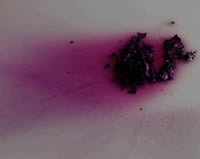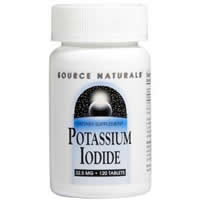Difference between Iodine and Iodide
Key difference: Iodine is a chemical element with symbol I and atomic number 53. Iodine gains one electron in order to become an iodide ion (I- ion).
 Iodine is a chemical element with symbol I and atomic number 53. It is a chemical compound that is purple in color. Essentially, when atoms gain or lose electrons, they become ions. In the case of iodine, it gains one electron to become an iodide ion (I- ion). An ion cannot remain in a free state, and has to combine with another element or elements to form a compound.
Iodine is a chemical element with symbol I and atomic number 53. It is a chemical compound that is purple in color. Essentially, when atoms gain or lose electrons, they become ions. In the case of iodine, it gains one electron to become an iodide ion (I- ion). An ion cannot remain in a free state, and has to combine with another element or elements to form a compound.
Iodine gets its name from Greek ‘ioeidēs’ which means violet or purple; when iodine is in its gaseous form, it appears as a violet gas. Iodide, on the other hand, cannot exist on its own, and is usually combined with some other element, e.g. potassium iodide.
Both iodine and its compounds are primarily used in nutrition, and industrially in the production of acetic acid and certain polymers. In everyday life, iodide is most commonly encountered as a component of iodized salt, i.e. table salt. Our bodies use the iodide ion for metabolic processes, such as thyroid function. However, our bodies cannot absorb solid elemental iodine to use for our normal functions, which is why iodides are so important for humans. Iodides are commonly available in supplement tablets as potassium iodide. Worldwide, iodine deficiency affects two billion people. It is the leading preventable cause of thyroid diseases and mental retardation.
 Humans, like all higher animals, require iodine to synthesize thyroid hormones. Iodine and tyrosine are the two main ingredients in thyroid functions. Radioisotopes of iodine are concentrated in the thyroid gland along with non-radioactive iodine. The thyroid gland actively absorbs iodide from the blood in order to make and release hormones into the blood. However, if one inhales the radioisotope iodine-131, it concentrates in the thyroid leading to problems, but is easily treatable with potassium iodide treatment.
Humans, like all higher animals, require iodine to synthesize thyroid hormones. Iodine and tyrosine are the two main ingredients in thyroid functions. Radioisotopes of iodine are concentrated in the thyroid gland along with non-radioactive iodine. The thyroid gland actively absorbs iodide from the blood in order to make and release hormones into the blood. However, if one inhales the radioisotope iodine-131, it concentrates in the thyroid leading to problems, but is easily treatable with potassium iodide treatment.
Thyroid hormones play a basic role in the human body. They act on gene transcription in order to regulate the basal metabolic rate. According to Dr. Weiping Teng, thyroid disease may occur if one consumes either too much iodine or too little. A study carried out by Dr. Teng showed that excess iodine intake increased an individual's chance of developing hypothyroidism.
Also, a good level of iodine or iodide can help maintain healthy teeth, fingernails, hair, and overall metabolism. The antimicrobial property of iodine and iodide is also often used in dentistry as it is believed to be beneficial to the teeth and gums. Furthermore, it is believed that iodine and iodide compounds have the ability to remove toxins from the body and therefore improve overall health. Iodine can also prevent harmful bacteria from growing in the stomach. Furthermore, it is also believed that iodine can work to remove heavy metals from the body, a process known as chelation.
Due the many helpful qualities of iodine, it is important that one maintains a sufficient iodine intake. However, much iodine can also be dangerous and can lead to thyroid problems, which is why it is equally important to limit excess iodine intake.
Image Courtesy: dherbs.com, americannutrition.wordpress.com









Add new comment